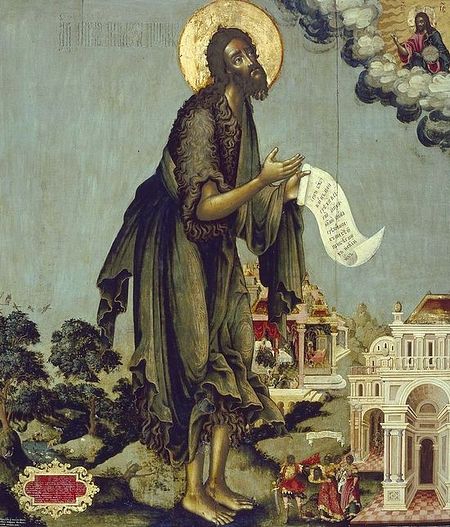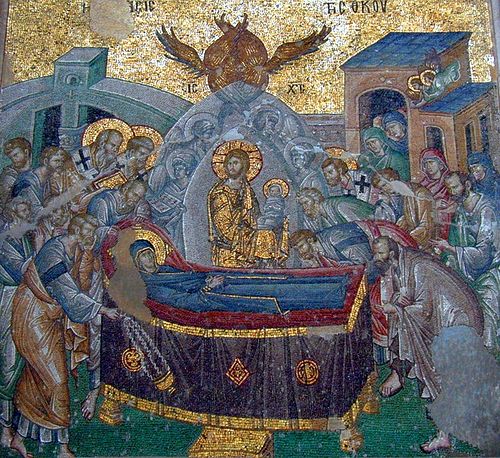Life & Faith
St. Joannicius the first Patriarch of Serbia
Commemorated on September 16/3
Saint Joannicius, Patriarch of Serbia, was a native of the city of Prizren. At first, he was a secretary under king Karl (Charles) of Serbia, and later on from the year 1339, he guided the Church as Archbishop.
In the year 1346 a Council of all the Serbian archpastors, and including also the Patriarch of Bulgaria, at the wish of King Dushan, chose Archbishop Joannicius as Patriarch of the Serbian Orthodox Church. Saint Joannicius reposed on September 3, 1349 and was buried in the Pech monastery.
The Beginning of the Church Year, or the Beginning of the Indiction SEPTEMBER 14 / SEPTEMBER 1
The First Ecumenical Council [Nicaea, 325] decreed that the Church year should begin on September 1. The month of September was, for the Hebrews, the beginning of the civil year (Exodus 23:16), the month of gather- ing the harvest and of the offering of thanks to God. It was on this feast that the Lord Jesus entered the synagogue in Nazareth (Luke 4:16–21), opened the book of the Prophet Isaiah and read the words: The Spirit of the Lord God is upon Me; because the Lord hath anointed Me to preach good tidings unto the meek; He hath sent Me to bind up the brokenhearted, to proclaim liberty to the captives, and the opening of the prison to them that are bound; to proclaim the acceptable year of the Lord, and the day of vengeance of our God; to comfort all that mourn (Isaiah 61:1–2).
The Feast of the Cincture of the Holy Theotokos
September 13/ August 31
After her Dormition, the Holy Theotokos gave her cincture to the Apostle Thomas. That cincture was later brought to Constantinople and kept in a sealed reliquary in the Church of the Mother of God at Blachernae, founded by Empress Pulcheria. This reliquary was not opened until the time of Emperor Leo the Wise (886–912). Leo’s wife, Empress Zoe, became mentally ill and, in accord with a heavenly vision, she desired that the cincture of the Most-holy Theotokos be placed on her. The emperor implored the patriarch, and the reliquary was opened. Then the cincture was removed and placed on the ailing empress. The empress was healed immediately. Today’s feast was instituted in commemoration of that miracle. Currently, one part of the cincture is to be found in Zugdidi, Georgia, because the daughter of Emperor Romanus was healed by the aid of this cincture—and when her father married her to the Georgian Emperor Abuchaz, she took part of the cincture with her. By order of the Russian Emperor Alexander I, a special church was built at Mingrelia, in Zugdidi, where that relic of the miracle-working garment of the Most-holy Theotokos is kept.
The Beheading of the Holy Prophet and Forerunner John the Baptist
 In the Name of the Father and of the Son and of the Holy Spirit
In the Name of the Father and of the Son and of the Holy Spirit
Why does the Church give such veneration to St. John the Baptist, even fixing a strict fast day in his honour? Here are ten reasons:
1. Our Lord Himself said that St. John was the greatest prophet “among those born of women” (Luke 7, 28). Some hearing these words are surprised. They ask: Surely, Christ Himself is the greatest man born of women? However, Christ was not born of a woman (i.e. a married female), he was born of a Virgin. Therefore, in obedience to our Lords words, that St. John is the greatest born of women, the Church duly honors him. In fact, there are no fewer than six feasts of St. John in the Church Year. The first is his Conception on September 23/October 6. Then comes his commemoration on January 7/20, the day after the Feast of the Baptism of Christ. The third is the Second Finding of his head on February 24/March 9. His next feast is the Third Finding of his head on May 25/June 7. The fifth is his Birth, or Nativity, on June 24/July 7, and finally today’s feast, the last in the Church Year, his Beheading on August 29/September 11.
Martyr Gorazd of Prague, Bohemia and Moravo-Cilezsk
 “I am the good shepherd. The good shepherd gives His life for the sheep” [John 10:11].
“I am the good shepherd. The good shepherd gives His life for the sheep” [John 10:11].
“O Lord, make this man also, who has been proclaimed a steward of the episcopal grace, to be an imitator of You, the true Shepherd, Who laid down Your life for Your sheep....” [Prayer of Consecration of a Bishop]. On September 25, 1921, these words were prayed over Father Gorazd Pavlik as he was consecrated the Bishop of Moravia and Silesia. It is doubtful that anyone in attendance that day, including the new bishop, expected that he would be called upon to live that prayer in a literal way.
Matthias Pavlik was born in 1879 in the Moravian town of Hrubavrbka in what would later become the Czech Republic. He was born into a Roman Catholic family, completed the Roman Catholic seminary in Olomouc and was ordained a priest. 
The Theotokos on Her Deathbed
 We have read the last page of the sacred book, the content of which exudes innocence and piety from cover to cover. At the mere sight of this book, even the cruelest critics bearing the weight of prejudice and bias have silently stopped, and having read it from beginning to end, walked away with softened hearts and rejuvenated spirits. Closed now is the book that began with the words, “In the Jewish town of Nazareth lived the childless elder Joachim and his wife Anna…”
We have read the last page of the sacred book, the content of which exudes innocence and piety from cover to cover. At the mere sight of this book, even the cruelest critics bearing the weight of prejudice and bias have silently stopped, and having read it from beginning to end, walked away with softened hearts and rejuvenated spirits. Closed now is the book that began with the words, “In the Jewish town of Nazareth lived the childless elder Joachim and his wife Anna…”

